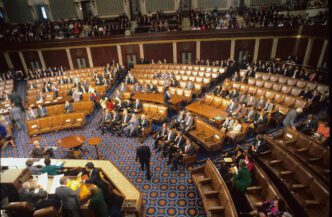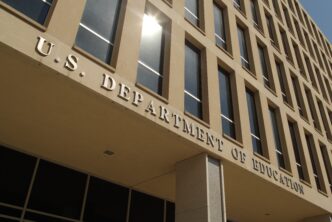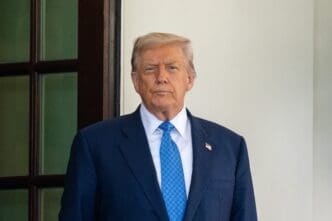President Donald Trump is scheduled to visit the Federal Reserve on Thursday, escalating a sustained public pressure campaign against its chairman, Jerome Powell, whom the president himself appointed. The visit comes just one week after President Trump publicly stated that cost overruns on a renovation of the central bank’s headquarters could be grounds for firing Mr. Powell. This direct engagement marks a significant new phase in the conflict over the Federal Reserve’s independence and its interest rate policy, fueling uncertainty in financial markets and challenging long-standing norms of American economic governance.
The Core Conflict: Interest Rates and Economic Policy
For months, the central point of contention has been the Federal Reserve’s handling of monetary policy. President Trump has repeatedly and publicly demanded that the Fed lower interest rates to stimulate economic growth and reduce the borrowing costs for the massive federal debt.
The President argues that a more aggressive rate-cutting strategy would unleash further economic potential and give the United States a competitive advantage. This perspective aligns with his administration’s goal of achieving robust GDP growth, a key metric for his political platform.
Conversely, Chairman Powell and the Federal Open Market Committee (FOMC) have adopted a more cautious “wait-and-see” approach. After implementing three rate cuts last year, the Fed has held its key short-term interest rate steady at 4.3% this year, citing a need to observe how the economy absorbs those changes and the effects of the administration’s widespread tariffs.
The Fed’s primary concern, as articulated by Powell, is that the tariffs could lead to higher consumer prices and push up inflation. The central bank operates under a dual mandate from Congress: to promote maximum employment and to maintain stable prices, making inflation a critical variable in its decision-making process.
A New Front: The Headquarters Renovation
President Trump has now seized on a new issue to leverage against Powell: the rising cost of renovating the Fed’s main buildings in Washington. The project, which includes extensive underground construction at the Marriner S. Eccles Building, has seen its estimated cost increase significantly from $1.9 billion to approximately $2.5 billion.
Officials attribute the cost surge to complex construction requirements and a sharp rise in the price of building materials, a consequence of the broad inflationary pressures that spiked in 2021 and 2022. This creates a politically charged situation where the institution tasked with fighting inflation is citing it as a reason for its own budget overruns.
When asked directly last week if this spending could be a justification for removing the Fed chairman, President Trump replied, “I think it is.” He further described the expenditure on what he termed “a renovation” as “really disgraceful,” signaling he views it as a potential pretext for taking action.
The Unprecedented Threat to Fed Independence
The public sparring has culminated in President Trump openly floating the idea of firing a sitting Federal Reserve chair, an action without modern precedent. In an Oval Office meeting, the president reportedly asked a group of House Republicans for their opinion on whether he should dismiss Powell.
While President Trump later told reporters it was “highly unlikely” he would take that step, he confirmed he had discussed “the concept of firing him.” This public contemplation alone undermines the institutional autonomy that is considered essential for the Fed’s credibility.
Can a President Fire a Fed Chair?
The legality of such a move is ambiguous and rests on untested legal ground. The Federal Reserve Act states that a governor, which includes the chair, can be “removed for cause” by the President. However, the statute does not define “cause.”
The general consensus among legal scholars and economists is that “cause” would likely be interpreted by courts as referring to personal misconduct or dereliction of duty, not a disagreement over monetary policy. Using a cost overrun on a construction project as “cause” would represent a radical and controversial interpretation of the law.
Market and Economic Implications
An attempt to remove a Fed chair over policy differences would almost certainly trigger turmoil in global financial markets. Investors and international partners rely on the Fed’s independence as a guarantee that U.S. monetary policy is shielded from short-term political whims.
Such a move could damage the credibility of the U.S. dollar, increase volatility in stock and bond markets, and potentially raise borrowing costs for the entire economy. It is this risk of severe economic fallout that has, for decades, created a firewall between the White House and the Federal Reserve’s day-to-day operations.
In conclusion, President Trump’s upcoming visit to the Federal Reserve is far more than a courtesy call; it is a powerful symbol of a high-stakes confrontation. The dispute places the President’s desire for immediate economic stimulus directly against the foundational principle of central bank independence. How this conflict resolves will have lasting consequences not only for the U.S. economy but also for the institutional norms that have governed it for generations.








